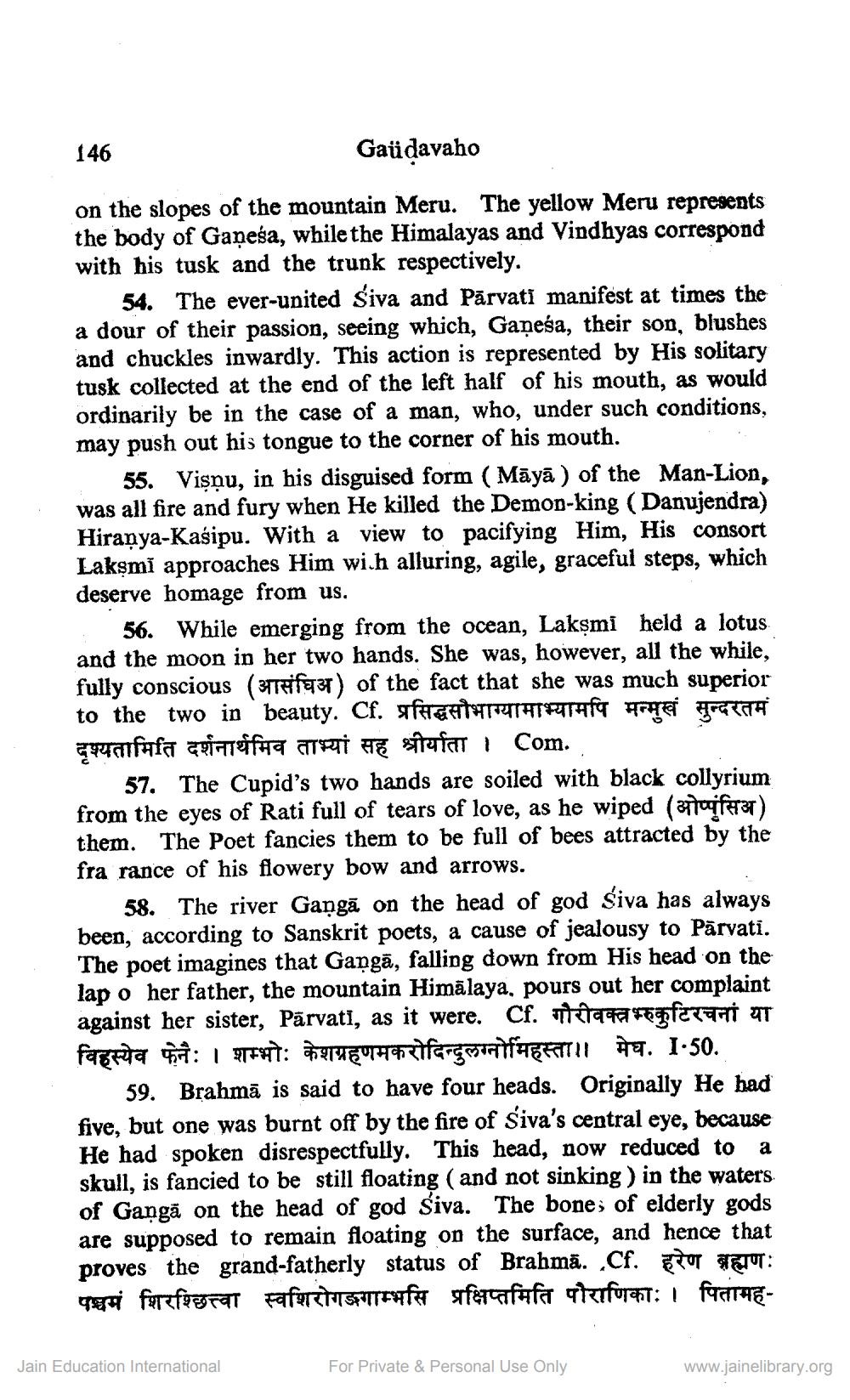________________
146
Gaüdavaho
on the slopes of the mountain Meru. The yellow Meru represents the body of Gaṇeśa, while the Himalayas and Vindhyas correspond with his tusk and the trunk respectively.
54. The ever-united Śiva and Pārvati manifest at times the a dour of their passion, seeing which, Ganesa, their son, blushes and chuckles inwardly. This action is represented by His solitary tusk collected at the end of the left half of his mouth, as would ordinarily be in the case of a man, who, under such conditions, may push out his tongue to the corner of his mouth.
55. Vişņu, in his disguised form ( Māyā) of the Man-Lion, was all fire and fury when He killed the Demon-king (Danujendra) Hiranya-Kasipu. With a view to pacifying Him, His consort Lakşmi approaches Him wich alluring, agile, graceful steps, which deserve homage from us.
56. While emerging from the ocean, Lakşmi held a lotus and the moon in her two hands. She was, however, all the while, fully conscious (37HTET3T) of the fact that she was much superior to the two in beauty. Cf. प्रसिद्धसौभाग्यामाभ्यामपि मन्मुखं सुन्दरतमं gunfufa criaroffia CTRTI E stufat i Com.
57. The Cupid's two hands are soiled with black collyrium from the eyes of Rati full of tears of love, as he wiped (aftar) them. The Poet fancies them to be full of bees attracted by the fra rance of his flowery bow and arrows.
58. The river Gangā on the head of god śiva has always been, according to Sanskrit poets, a cause of jealousy to Pārvati. The poet imagines that Gangā, falling down from His head on the lap o her father, the mountain Himālaya, pours out her complaint against her sister, Pārvati, as it were. Cf. tapa fagfarari OT farepta : 1 7817: 14 Hallarg confHEFITRI 2. I50.
59. Brahmā is said to have four heads. Originally He had five, but one was burnt off by the fire of Siva's central eye, because He had spoken disrespectfully. This head, now reduced to a skull, is fancied to be still floating (and not sinking ) in the waters of Gangā on the head of god Śiva. The bones of elderly gods are supposed to remain floating on the surface, and hence that proves the grand-fatherly status of Brahmā. Cf. tor FEIT: पञ्चमं शिरश्छित्त्वा स्वशिरोगङगाम्भसि प्रक्षिप्तमिति पौराणिकाः। पितामह
Jain Education International
For Private & Personal Use Only
www.jainelibrary.org




